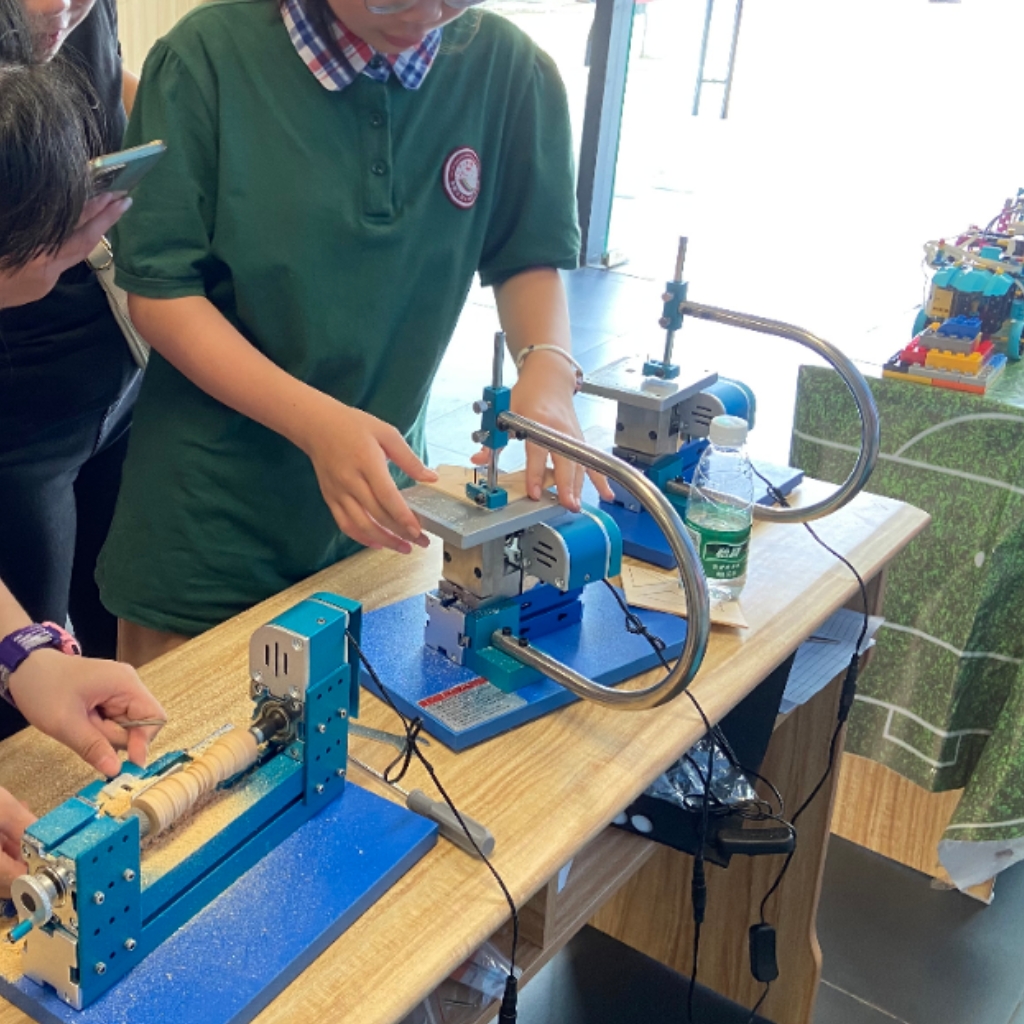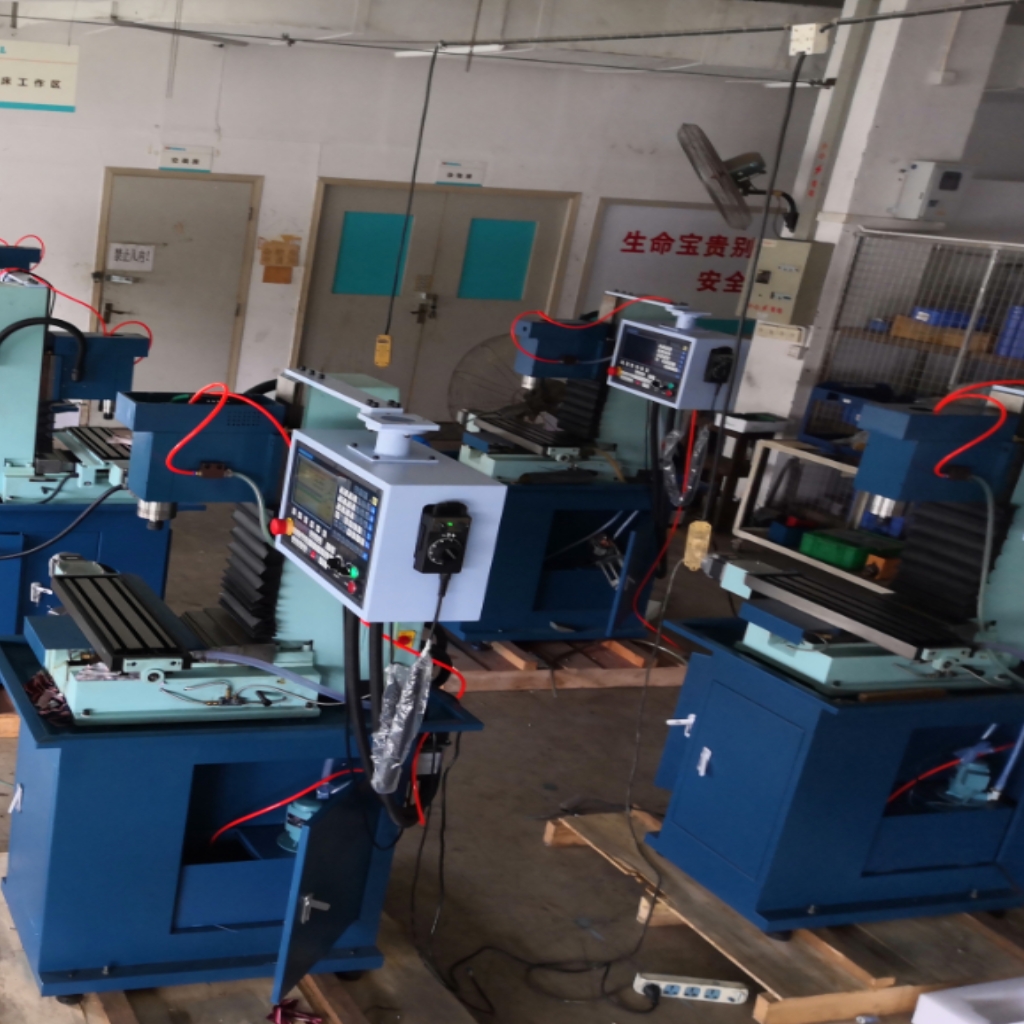Blog
Xendoll has 22 years of experience in the production of small machine tools. We will help you choose the suitable machine and share our experience in CNC machining with you.
 Aug 25, 2025
Aug 25, 2025

 566
566
For mechanical distributors, educational institutions, and machining enthusiasts, choosing the right equipment is the first step toward successful projects. At the heart of many workshops lies the milling machine, an indispensable tool for shaping solid materials like metal, wood, and plastic. However, a fundamental choice must be made: do you opt for a traditional non-CNC (manual) milling machine or a modern CNC (Computer Numerical Control) version? Understanding the core differences between them is crucial for making an informed investment. This article will break down the key distinctions in operation, precision, efficiency, and application to help you decide which best suits your needs.

The Core Difference: Manual Control vs. Digital Automation
The most significant difference is in the name and the mode of operation.
Non-CNC Milling Machine (Manual): This is a hands-on, traditional machine. The operator directly controls the movement of the cutting tool and the workpiece using hand wheels and levers. Every move—adjusting the table’s X, Y, and Z axes, setting the spindle speed, and controlling the feed rate—is done manually. The quality of the final product relies heavily on the operator’s skill, experience, and constant attention.
CNC Milling Machine: This machine is operated by computer commands. An operator writes or generates a program (using G-code) that contains precise instructions for every movement of the machine. Once the program is loaded and the machine is set up, the CNC system executes the commands automatically, moving the tools and workpiece with extreme accuracy with minimal human intervention. The operator’s role shifts from active control to supervision and setup.
Breaking Down the Key Comparisons
Let's explore how this core difference translates into practical advantages and limitations.
1. Precision and Repeatability
Non-CNC: Achieving high precision is possible but demands a highly skilled machinist. Repeating the same part multiple times with identical accuracy is challenging and time-consuming, as each piece is made individually by hand. Human error is always a factor.
CNC: CNC mills excel in precision and repeatability. They can produce complex parts with tolerances within thousandths of an inch, exactly the same way, every time. This is ideal for producing multiple identical components or parts with intricate geometries that are nearly impossible to make manually.
2. Complexity of Parts
Non-CNC: These machines are perfect for simple cuts, flat surfaces, slots, and basic轮廓. Creating complex 3D shapes, curves, or parts with multiple intricate features is extremely difficult and often not feasible.
CNC: The digital control allows for the creation of highly complex and intricate parts. 3D contours, organic shapes, and detailed engravings are programmed and executed with ease, unlocking a world of design possibilities that manual milling cannot achieve.
3. Setup and Production Speed
Non-CNC: Setup is generally quicker for simple, one-off jobs. However, production speed is much slower because the operator must be actively involved in every step of the process.
CNC: The initial setup and programming phase can be longer. However, once the program is verified, the machine can run unattended for hours, even overnight. This makes CNC milling vastly superior for medium to high-volume production runs, drastically reducing the time per part.
4. Operator Skill and Labor
Non-CNC: Requires a deep understanding of machining principles, metrology, and hands-on skill. It is an art form that takes years to master.
CNC: Requires a different skill set. The operator needs to understand computer-aided design (CAD) and computer-aided manufacturing (CAM) software, how to write or troubleshoot G-code, and how to set up the machine properly. The physical demand is lower, but the technical knowledge requirement is higher.
5. Cost Implications
Non-CNC: The upfront cost for a manual mill is significantly lower. This makes them an attractive entry-point for hobbyists or shops with a limited budget focused on simple, low-volume work.
CNC: The initial investment is higher, considering the cost of the machine, software, and training. However, for businesses, this cost is often justified by the massive gains in productivity, reduced labor costs per part, and minimal material waste due to high accuracy.
Conclusion: Choosing the Right Tool for Your Application
In summary, the choice between a CNC and a non-CNC milling machine isn't about which is better overall, but which is better for your specific application.
Choose a Non-CNC (Manual) Milling Machine if you are a machining enthusiast learning the fundamentals, a workshop that primarily does quick, one-off repairs, or a educational facility teaching basic machining principles. It offers hands-on experience at a lower entry cost.
Choose a CNC Milling Machine if you are a professional shop focused on production runs, complex part manufacturing, or achieving high precision and perfect repeatability. It is the tool for automation, complexity, and scaling your operations.

At Xendoll Tools, we understand that both types of machines have their vital place in the workshop. Whether you are a distributor supplying robust manual mills to vocational schools or a machining enthusiast looking to step into the world of precision automation with a compact CNC mill, we provide high-quality, reliable mini milling solutions to meet your needs. Explore our range on xendolltools.com to find the perfect machine that matches your ambition and skill level.



 Show all our samples
Show all our samples
 Provide you with a free quote
Provide you with a free quote
 Answer all the questions you may have
Answer all the questions you may have
 Guided installation and other options
Guided installation and other options